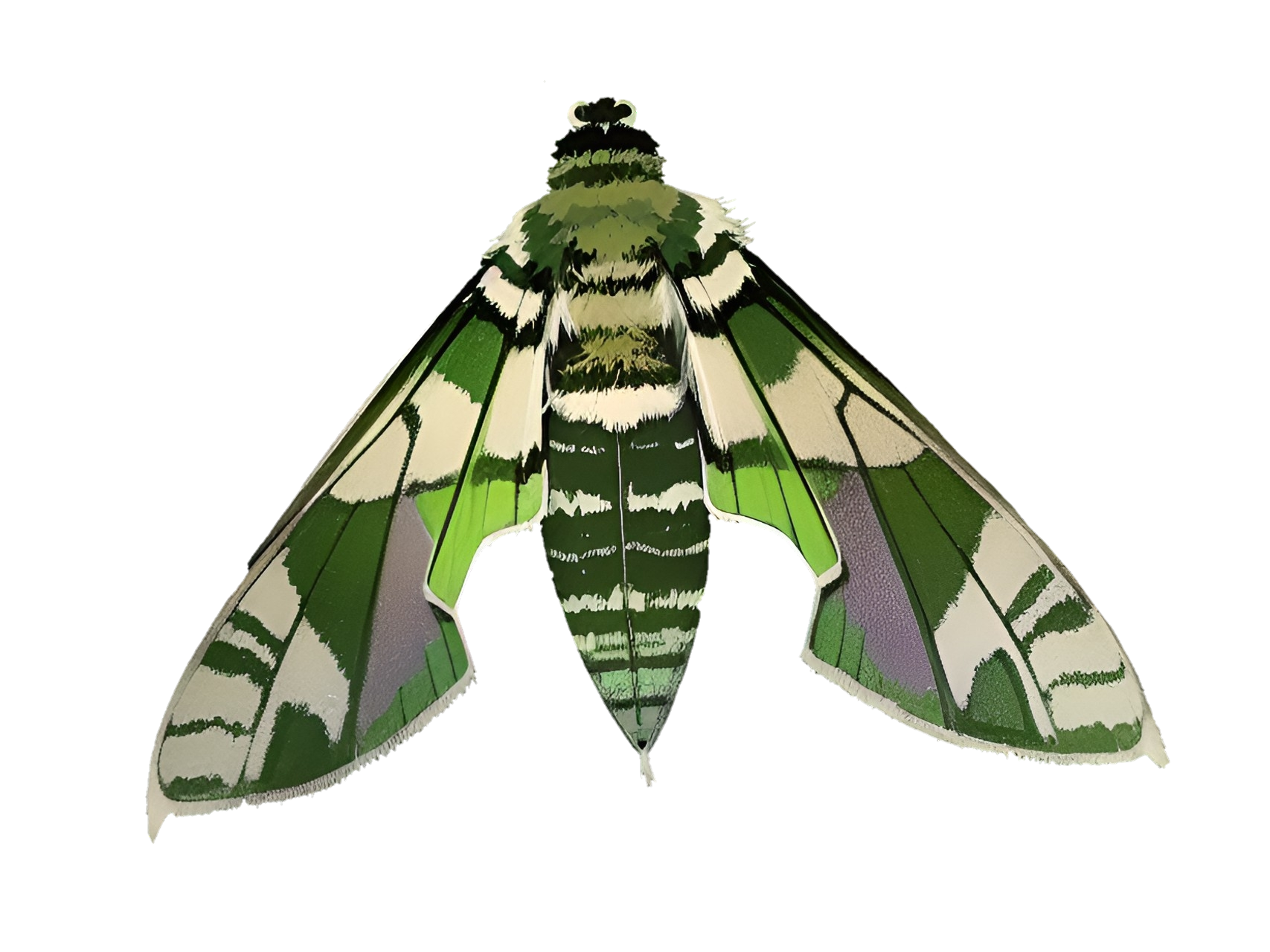Nerium Hawk-Moth
First AbilityRithaldis' Charge
Second AbilityLithyr's Sense Thanks to Lithyr's Sense are able to sense all flowers, herbs and fruit in their environment despite barriers and can identify them. Used to find their preferred flowers. |
Anatomy |
Original Ancestor | Lifespan |
|---|---|
Daphnis nerii
Oleander Hawk Moth |
10-30 days |
Wingspan | Caterpillar Size |
3-5 in
9-13 cm |
2-3 in
6-8 cm |
Coloration |
|---|
Adults have alternating patterns of dark and light green with some gray markings. Caterpillars start out bright yellow with a black "horn" on their rear, slowly growing green to brown. They also developed a large blue and white false eye and their horn turns yellow. Pupae are light brown and 60 to 75 mm in length. |
Habitat
Shamsi Desert and Xishi Shamo are the ideal home for their larva but adults migrate into Zhongguo, Bharat or Eluziar (Flumen Pontem or the Eluzian Valley). They reside in scrublands, meadows and hillsides. |
Diet |
After sunset, adult Neriums feed on the nectar of many flowers, their favorites being petunia, jasmine and honeysuckle. Caterpillar gnaw on the leaves of Nerium Cupidinis but might also feed on dogbane or periwinkle when their namesake is absent. Because of the toxicity of nerium to other species, the caterpillars become inedible to a number of predators, immune to these toxins themselves! After pupating into adults, Nerium moths are only able to eat nectar. |
Life Cycle |
Nerium moths don't use pheromones to locate each other, the female instead making ultrasonic sounds to attract a mate. Males arrive from considerable distances. As they near each other, the male will match her ultrasonic song and she will mate a few hours before dawn. Females lay their eggs both under and atop the leaves, flowers, buds and twigs of Nerium Cupidinis or various dogbane plants when nerium isn't available. Eggs hatch after 2-6 days, much faster in warm climates, and larva eat their egg shells. When they are ready to pupate, nerium moths make a nest inside the soil below their host plant, directly on the ground or under foliage. After 2-3 days, adults will only live for two or three weeks, usually migrating into Eluziar or Zhongguo beween August and October. Perhaps because of their short lifespan, several generations are born each year. |







Comments